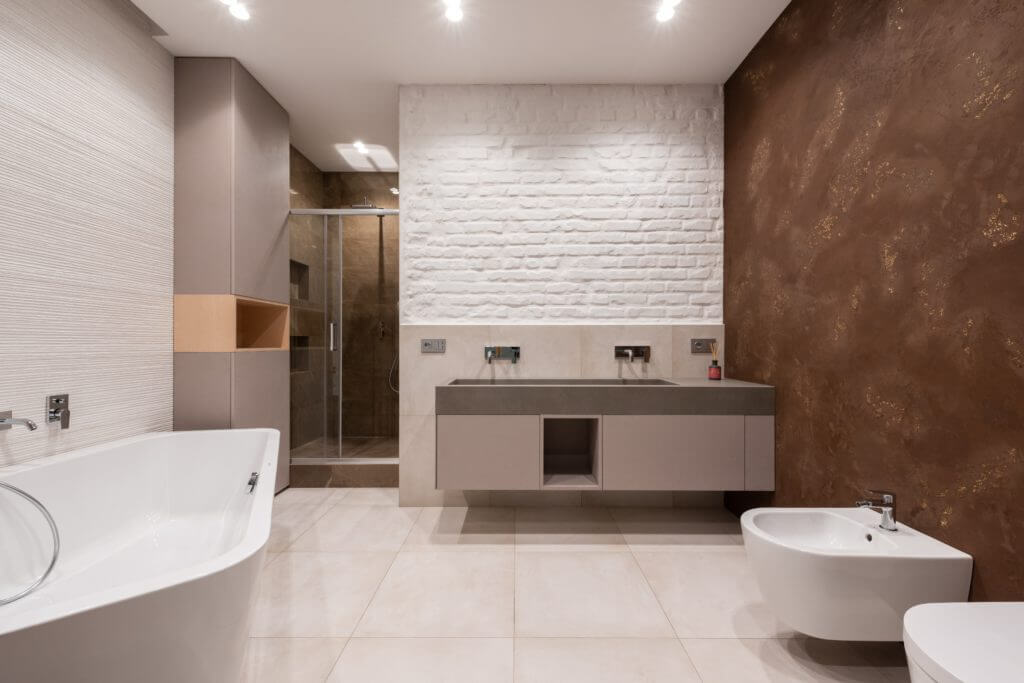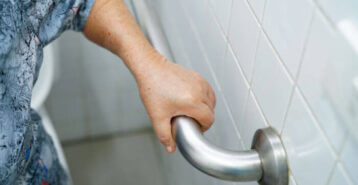Are you doing a bathroom remodel project?
Modernize can pair you with three to four pros in your area, so you can compare options and save time and money.
Bidets, a staple in many parts of the world, are gaining popularity in the U.S. for their hygienic benefits and eco-friendliness. In this comprehensive overview, we delve into the history, types, and advantages of bidets, exploring how they offer a superior clean and can be a more sustainable alternative to traditional toilet paper. Whether you’re considering installing a bidet in your home or simply curious about this bathroom innovation, our guide provides all the information you need to understand the rising trend of bidets in modern hygiene.

What Is a Bidet?
A bidet, a specialized fixture in the bathroom, offers a convenient way for individuals to cleanse themselves post-toilet use. While regarded as a luxury in the United States for personal hygiene, it’s a common and integral part of bathroom visits in many other parts of the world.
Traditionally, bidets are a separate toilet bowl with a water stream to clean up after using the toilet, but it is also popular to install a bidet attachment to your existing toilet.
How Do You Use a Bidet?
Typically, a bidet works as a freestanding plumbing fixture that is positioned near the toilet in your bathroom. The stand-alone fixtures require a licensed professional to install the bidet using existing plumbing. Some bidets spray water from the front toward the back while others spray water upwards from the bottom of the bowl.
Depending on the amount of space your bathroom possesses, a homeowner can also ask their trusted plumber about replacing their toilet for one with an integrated bidet washlet. Washlets function by integrating a bidet seat onto an existing toilet. Some manufacturers produce toilets with washlets already included. Others are sold as separate accessories and also require a nearby power source.
All bidets — standalone fixtures and washlets — operate with small jets and nozzles that project water for cleaning purposes.
- Familiarize Yourself with the Controls: Begin by acquainting yourself with the bidet’s features and controls. Understand the functions of various knobs or buttons for water pressure and temperature.
- Positioning: Carefully position yourself on the bidet. Ensure you are seated or positioned in a way that allows the water jet to reach the intended area effectively.
- Adjust Water Flow and Temperature: Gently adjust the controls to find a comfortable water flow and temperature. It’s advisable to start with a lower pressure and cooler temperature, gradually increasing to your preference.
- Commence Cleansing: Once comfortable with the settings, initiate the cleansing process. Allow the water to cleanse the area thoroughly.
- Duration of Use: Use the bidet for as long as necessary to feel clean, but be mindful of water usage.
- Finishing Up: After cleansing, turn off the water. If the bidet does not have an air-dry feature, use toilet paper or a towel to pat dry the area gently.
- Hygiene Practices: Ensure to wash your hands thoroughly after using the bidet, maintaining good personal hygiene.
- Regular Maintenance: Keep the bidet clean and well-maintained, ensuring it is always hygienic and ready for use. Regular cleaning is essential for optimal performance and hygiene.
Bidet Benefits
Bidets are lauded for their efficiency. They reduce the amount of toilet paper homeowners use annually. Your home’s plumbing system will reap the benefits. Cutting down on the amount of toilet paper discarded puts less strain on pipes. Additionally, for those thinking about their environmental footprint, reducing toilet paper use can help reduce carbon emissions released when wood pulp is processed into making toilet paper.
Find the Right Contractor for Your Bathroom Remodeling Project
Whether you’re ready to begin your project now or need some expert advice, our network of contractors are here to help. With a few simple questions, we’ll find the best local professionals for you
Additionally, bidet users say the practice is hygienic. It is also simple for people with mobility issues, making a bidet a smart investment for homeowners considering aging in place.
How Much Is a Bidet?
Bidets are a fairly affordable home improvement upgrade. Typically, the stand-alone fixtures will start at around $300. Installed, a homeowner can expect to pay up to $1,000 on average for a traditional bidet.
Of course, there are more expensive, luxury versions on the market depending on the features and aesthetic you’re looking for. Some come with extra features ranging from water temperature control and lights to Bluetooth speakers.
Separately, the more compact washlets that can be added atop an existing toilet seat start as low as $50 (but range in price to upwards of $1,000). They do not require professional installation. However, they may lack the longevity and customization options a more permanent fixture offers.
Bidets serve as a great, low-risk and minimal cost option when it comes to upgrading a bathroom. They are recommended by health professionals as a gentler alternative to using toilet paper. They’re also recommended by real estate agents, who say the addition can increase a home’s resale value. Modernize recommends speaking with a trusted bathroom contractor. You can discuss your options when it comes to installing a bidet and the potential benefits that come along with it.
Find the Right Contractor for Your Bathroom Remodeling Project
Whether you’re ready to begin your project now or need some expert advice, our network of contractors are here to help. With a few simple questions, we’ll find the best local professionals for you
Reviews from Real Homeowners
Welcome to Homeowner Resources! We are the Modernize blog. Modernize pairs more than 3 million homeowners a year with pre-vetted contractors in their area. This blog started because we believe homeowners should know everything about their homes, from how their HVAC works to which front door colors they might love. On Homeowner Resources, you can find information on every part of your home, right down to how you can negotiate with contractors to get the best price. Here's more about the blog.
Need a contractor? Learn more about how Modernize finds the right pro for you.



